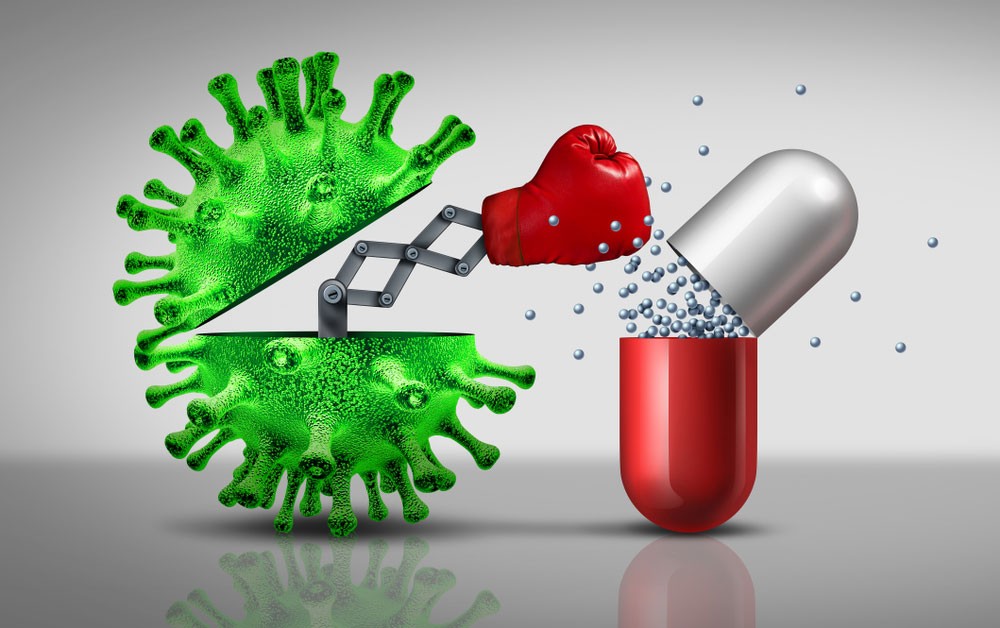According to scientists and clinicians, antibiotics are magical weapons used to treat bacterial infections that cause many types of diseases ranging from diarrhea to death. On average, we administer 3 doses of antibiotics per year. In brief, those weapons can destroy or decrease bacterial growth due to complex chemical interactions, thus helping our immune system combat infections.
With time, bacteria were able to develop clever ways to escape the effect of antibiotics, a term referred to as “antibiotic resistance”. Although in the 1970s most bacteria were sensitive to most antibiotics, nowadays one of the major concerns is the increased antibiotic resistance. Interestingly, bacteria can change their structures, their DNA and prevent antibiotics from exerting their roles. This made scientists consider bacteria as the “intelligent unseen creatures”. In general, treating resistant bacteria becomes much harder as compared to non-resistant ones and here appears the challenge to scientists in developing new antibiotics that could kill new resistant bacteria.
During the past decades, the phenomenon of antibiotic resistance emerged at an alarming rate in war zones where weapons harbor large amounts of toxic compounds that could promote rapid bacterial modifications. Unfortunately, with the increased tension in the Middle Eastern region, bacteria are modifying fast and clinicians face serious problems treating infections. According to the World Health Organization (WHO) and the Center of Disease Control and Prevention (CDC), each year in the U.S., at least 2 million people contract antibiotic-resistant infections, and at least 23,000 people die. Without intervention, by 2050 worldwide deaths caused by antibiotic-resistant infections are estimated to skyrocket to 10 million.
In addition, the misuse of antibiotics is an important parameter in the augmented antibiotic resistance. Antibiotics should not be administered without clinical prescriptions. In other words, treating non-resistant bacteria with high “unnecessary” dosages of antibiotics allows the bacteria to adapt to the environment and leads to rapid bacterial modifications. For example, stomach pains should not be directly treated with antibiotics as this would lead to detrimental effects in the future in terms of lack of treatments. According to scientists, bacteria and antibiotics are in a continuous race. Nowadays, developing new drugs to treat infections is one of the biggest challenges.
One crucial impact of the misuse of antibiotics is the development of multiple types of cancers such as lung, prostate, colon, pancreas, bladder, and kidney cancers. In line with this, the “American Academy of Pediatrics” revised their guidelines on treating ear infections due to multiple side effects of antibiotics. Early antibiotic use could be the spark for cancer development down the road, especially in children.
Several preventive measures should be taken to reduce the rapid increase of resistant bacteria. Most importantly, do NOT prescribe your own treatments upon bacterial infections. Refer to your clinicians for recommendations.
In general, cancer patients who are under chemotherapy are mostly at risk of developing bacterial infections. In this case, combination therapies of different doses of several antibiotics could be a useful solution depending on the level of bacterial resistance.
Interestingly, the WHO continuously updates the list of antibiotics and doses required for major infections. Abiding by the guidelines is a must; otherwise severe measures are taken by WHO and Centers for Disease Control (CDC).
Hygiene and sanitation are effective tools to limit bacterial spread.
Unfortunately, wars are major factors in the rapid emergence of resistant bacteria especially in the Middle East, an alarming fact that shouts out for major interventions.

